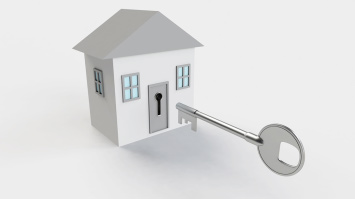A commercial lease (Lease) can be a complicated agreement with binding implications for both the landlord and tenant. Before you enter into a Lease, it is vital that you understand the rights and responsibilities of each party. The following are some of the more notable points of a Lease for your consideration when negotiating and/or reviewing your Lease.
One of the most basic but important considerations of a Lease is the renewal dates. A common wording for a renewal clause is “three (3) rights of five (5) years each”. This means that once the initial term of the Lease (which is defined in a separate clause) comes to an end, the tenant has the right to renew the Lease for a further five years, three times. After the third term of five years comes to an end, the Lease term must be re-negotiated by the parties. Quick Tip: Make sure you know how to formally renew your Lease and always do it in writing.
Whether you are a landlord or a tenant, it is important to note whether a ‘ratchet clause’ is present in a Lease. This clause states that the rent shall not fall below the rent paid in the previous year. This may mean that despite a reduction in the property value, the rental amount will either remain what you paid previously, or potentially rise. This clause is for the sole benefit of the landlord.
Where you may be sharing a commercial space with other tenants, it is important to check that there are no restrictions on the type of tenancy you intend to operate. It is also important that the portion of the outgoings to be paid by each tenant is reflective of each tenant’s proportional use of the building and its services.
If you intend to make minor alterations to the premises to prepare it for your tenancy, then it is important to pay attention to any “fit-out” clauses in the Lease. These dictate the extent of alterations or works that can be carried out, in conjunction with any further terms noted by the landlord. In the circumstances where you have put up signage or fixtures during your tenancy, which aren’t referred to in the fit-out clause, you may be required to return the premise to its original state when you moved in, at your cost, when you leave. This could be problematic if the tenant has made structural changes during their Lease term.
Most Leases should specify what the tenant/landlord are responsible for with regard to maintenance and repair if damage occurs to the premises or fixtures. Being aware of the details of this clause is important to ensure you are not hit with unexpected costs for maintenance or repairs. It is also beneficial to understand what is expected of you before you begin your tenancy. Quick tip: We strongly suggest that you take detailed notes of any items/areas that are damaged or look worn when you move into the premise.
Finally, whether you are a tenant or landlord, you may want to check whether your Lease can be assigned to another party. Having the ability to assign a Lease means that you can have another party take over your responsibilities and liabilities under the existing Lease. This is beneficial if for any reason you decide you no longer want to continue with the Lease. Note: Check the requirements for landlord approval regarding the potential assignment of the Lease before signing the Lease.
What we have highlighted above are some of the more notable points of a Lease. If you are considering entering into a Lease, we strongly suggest you meet with a legal professional to ensure you are getting the most out of your Lease and understand your responsibilities under the Lease.

